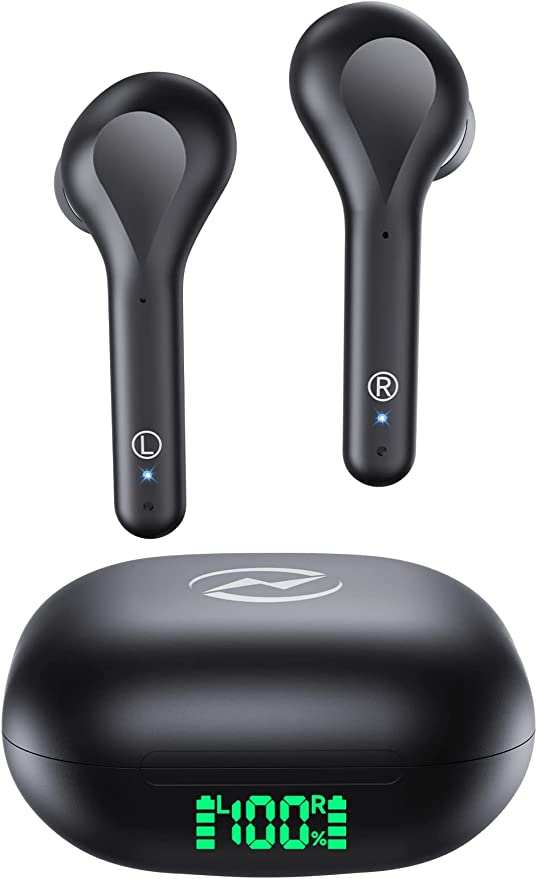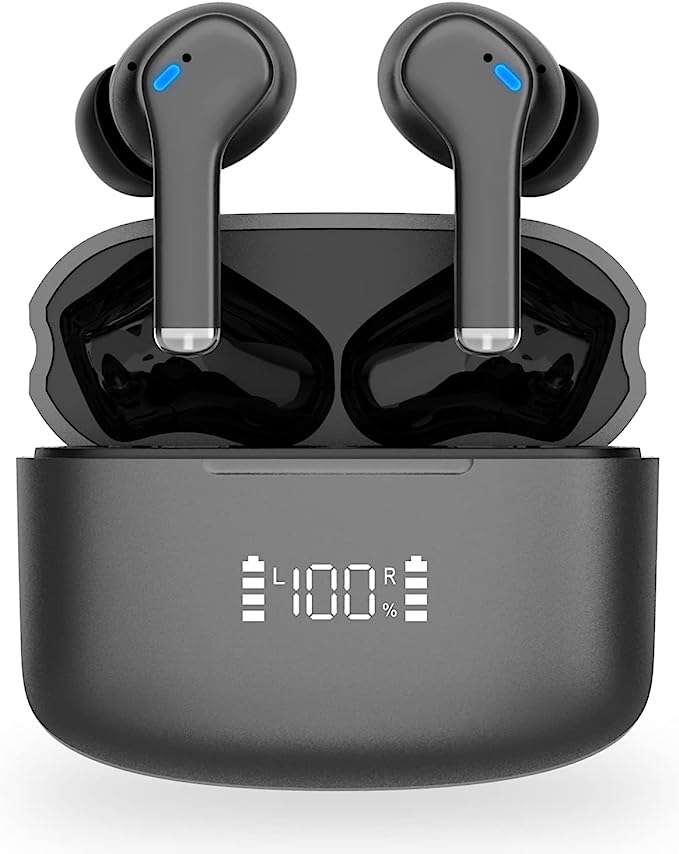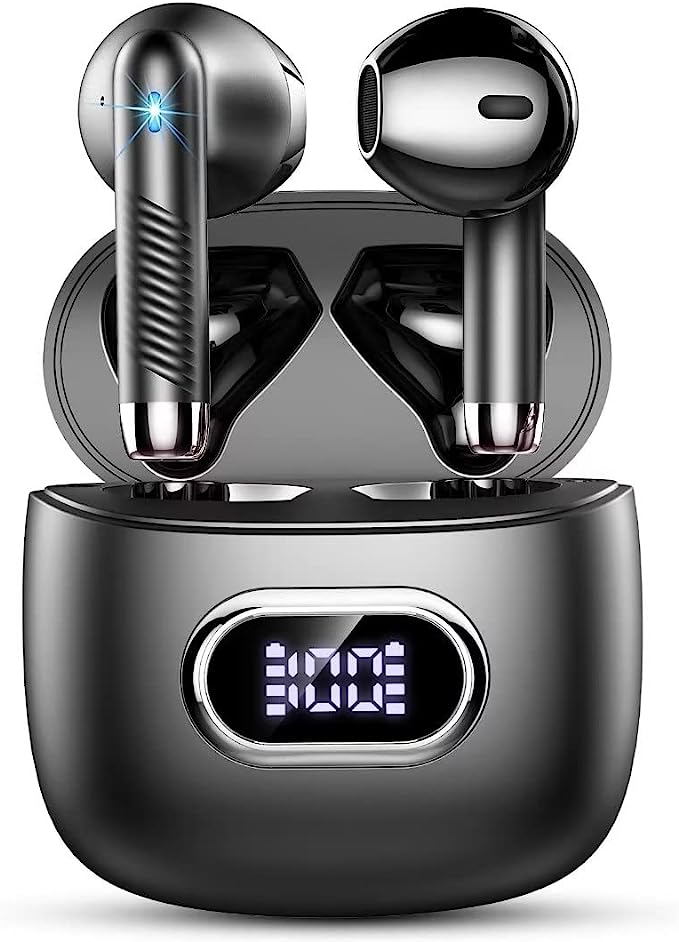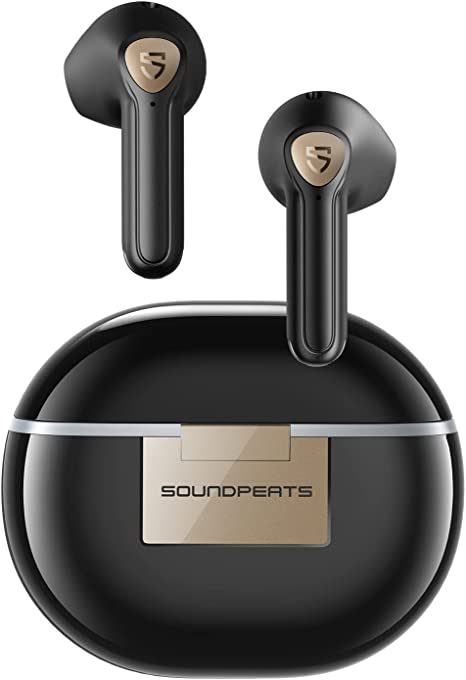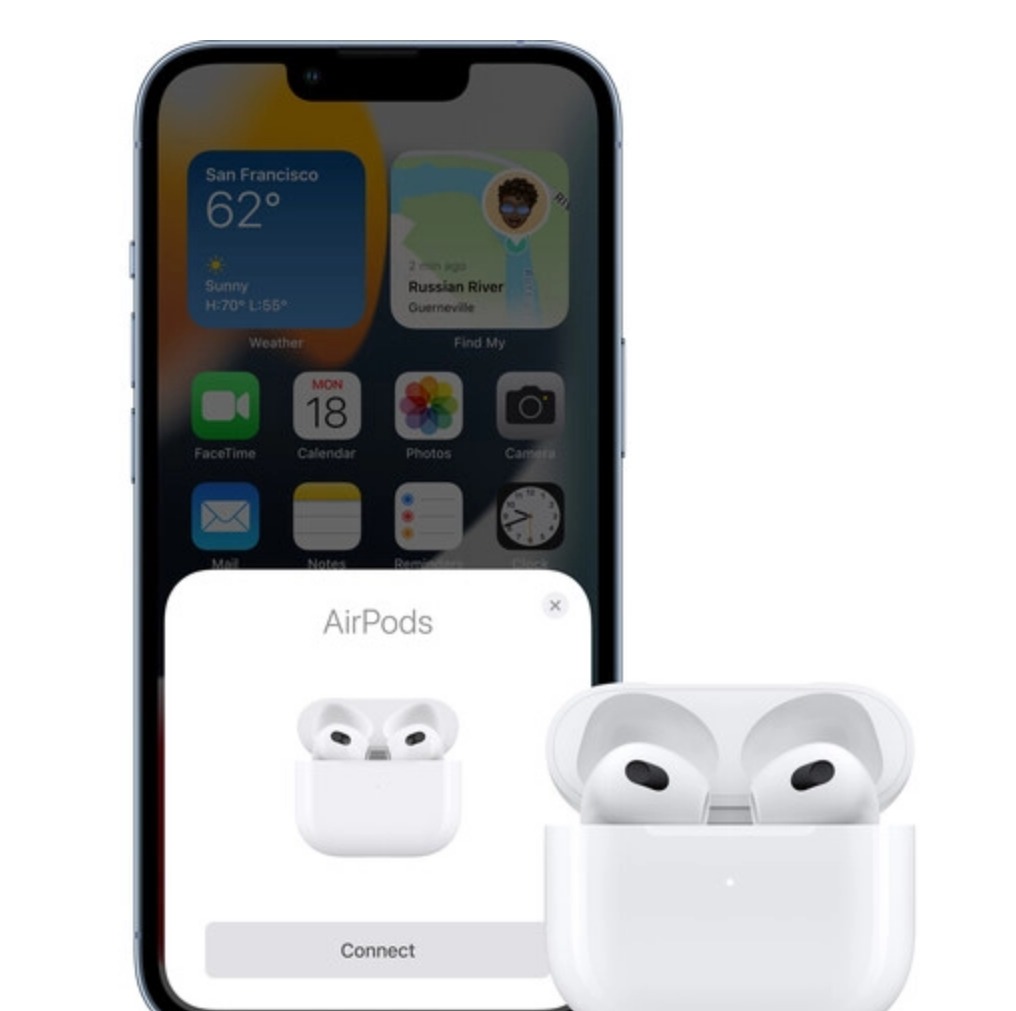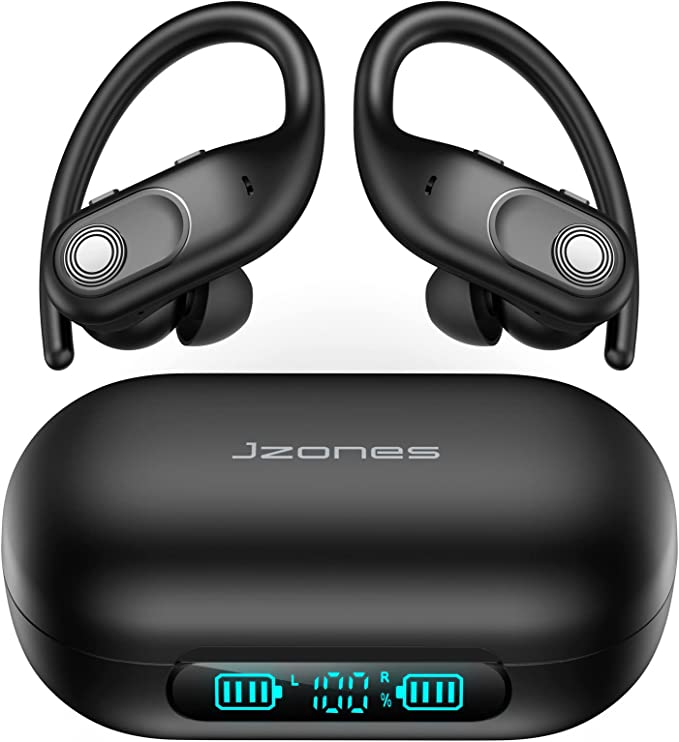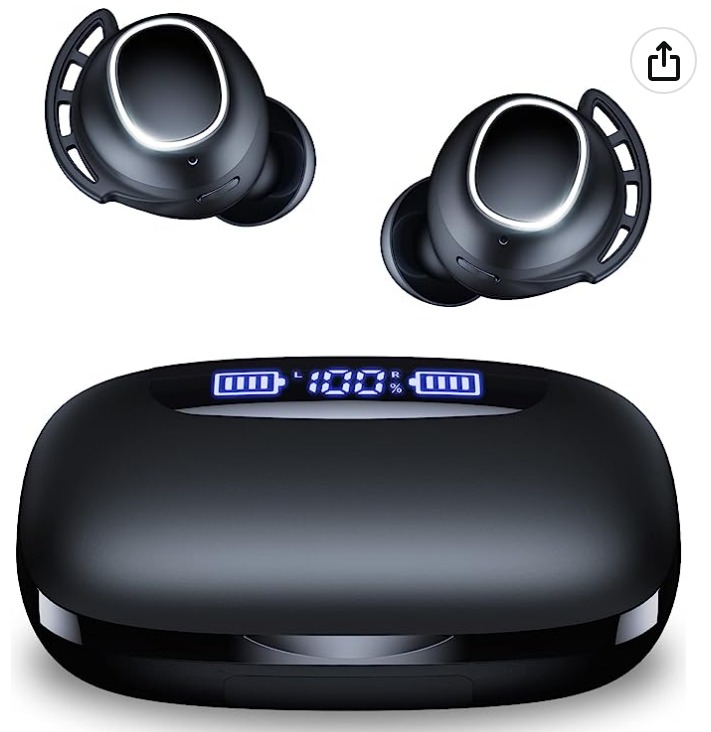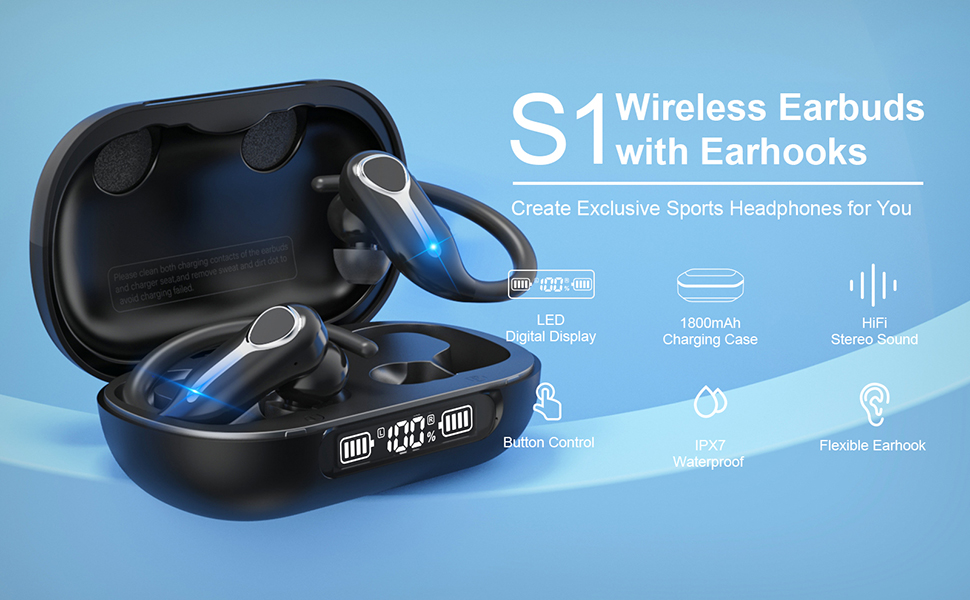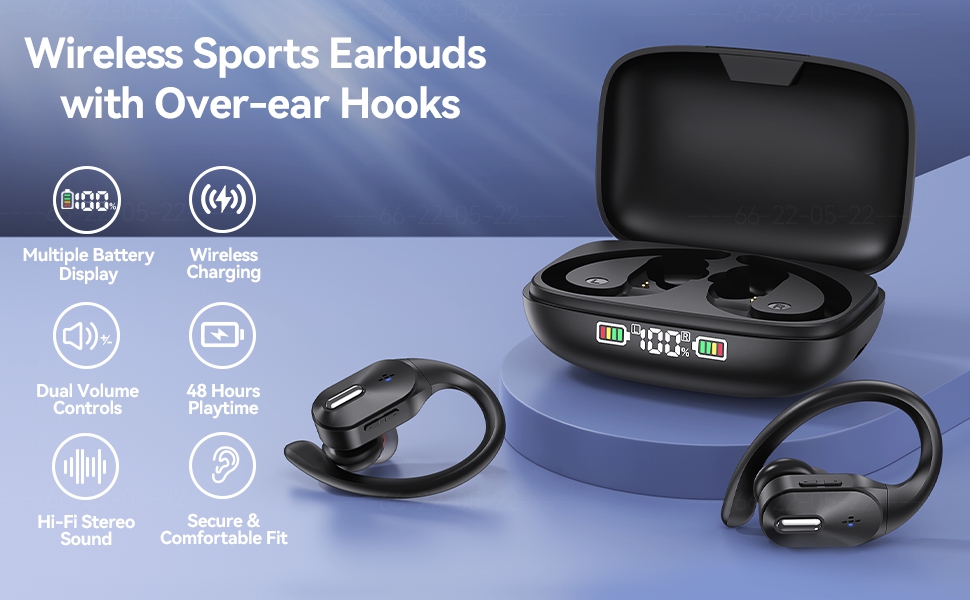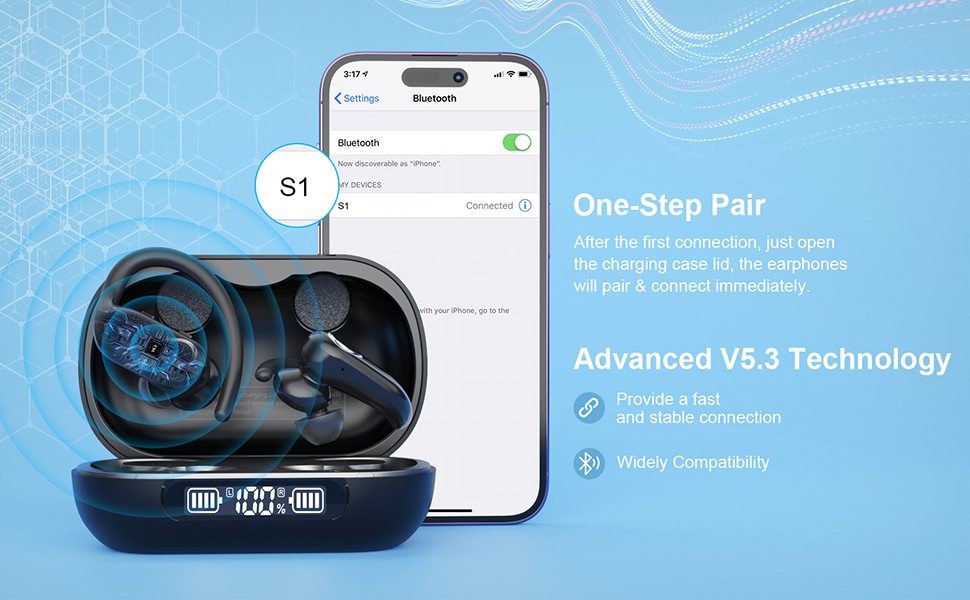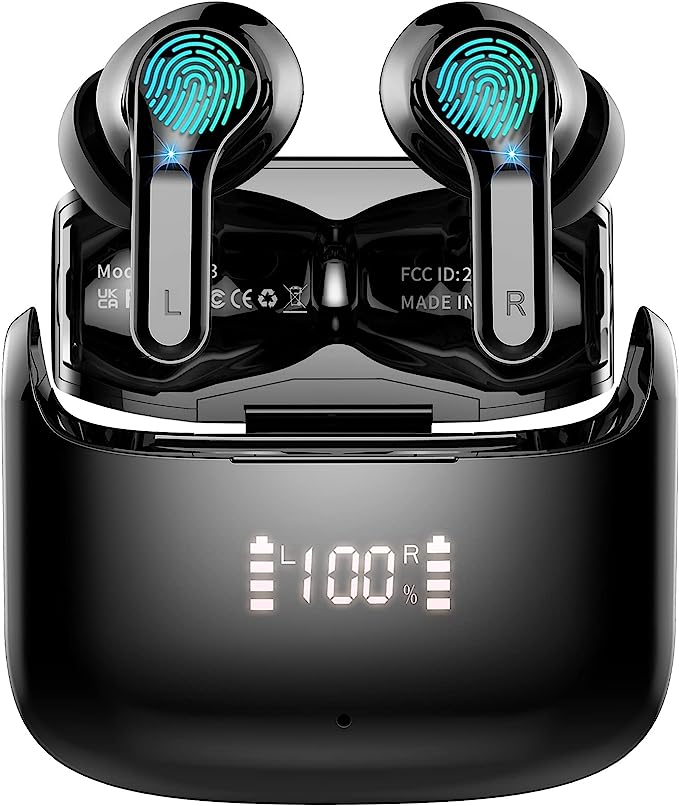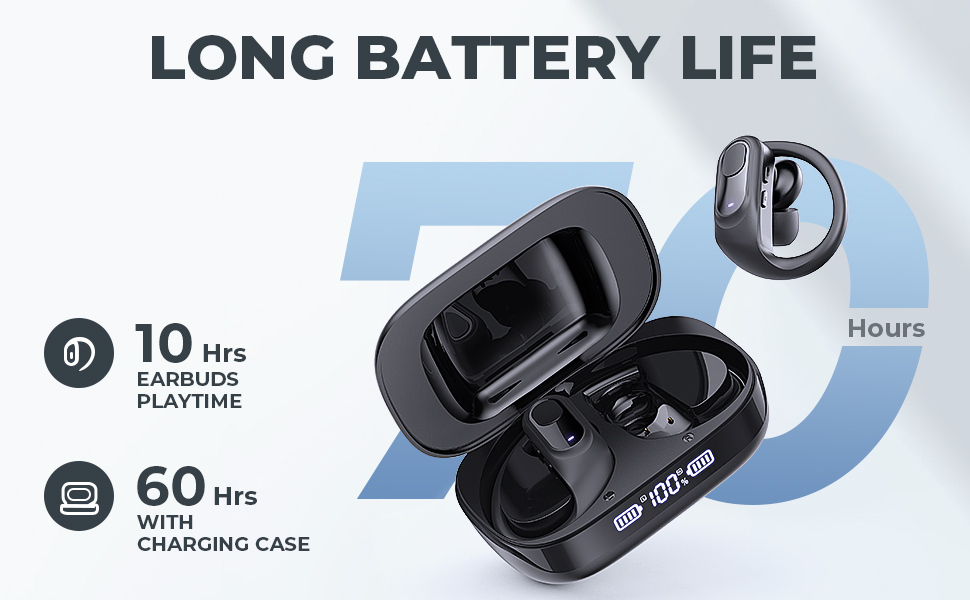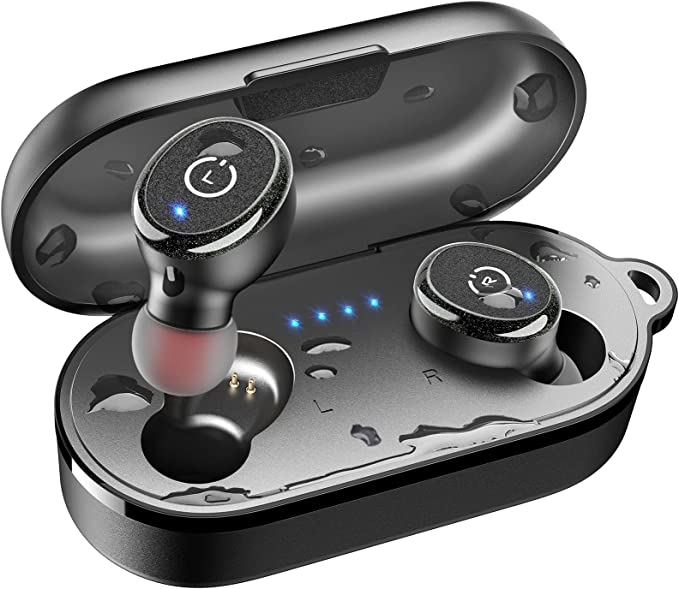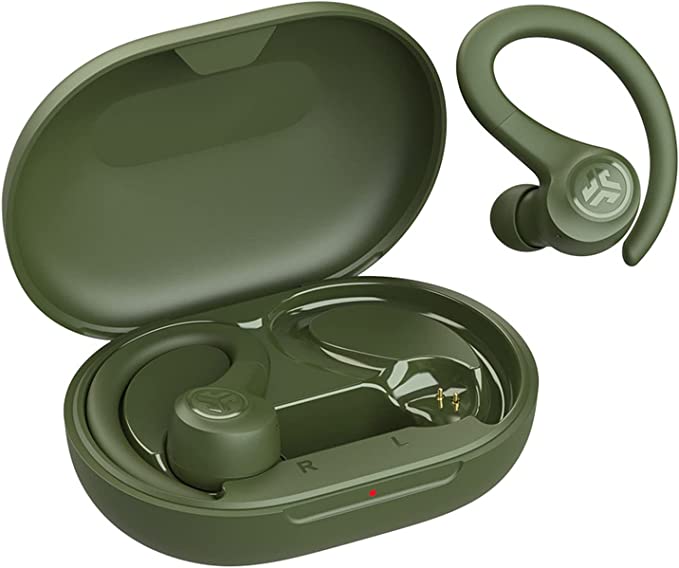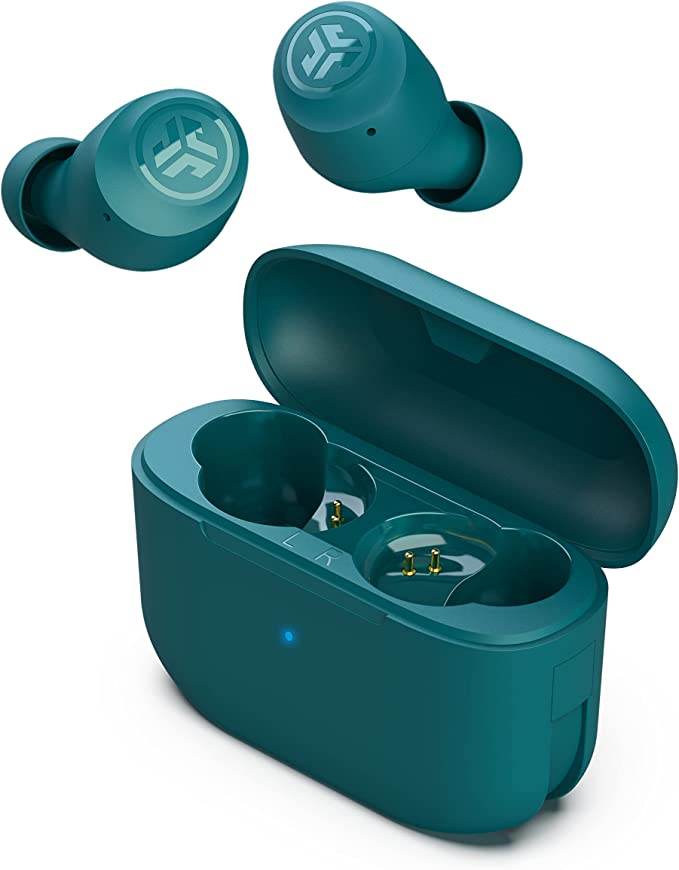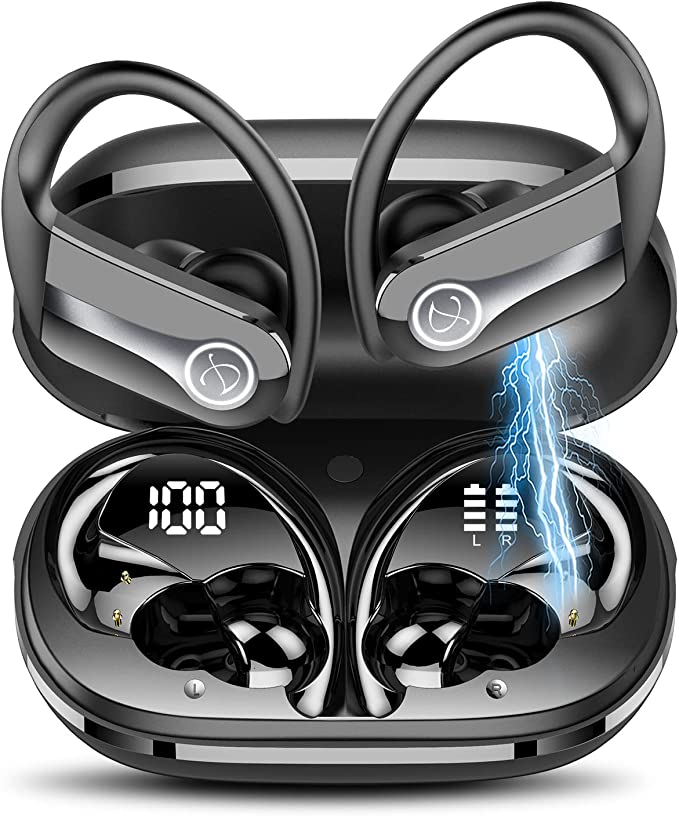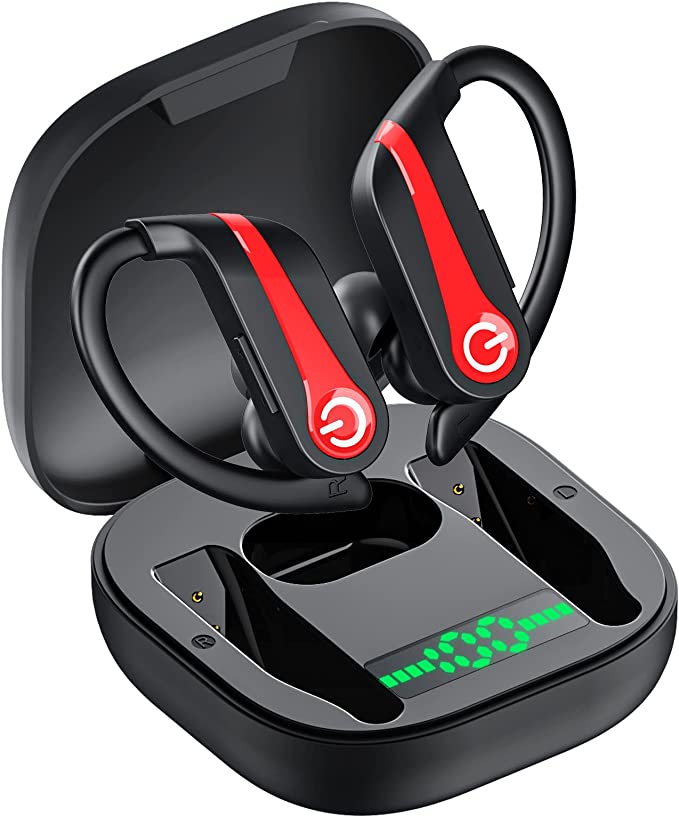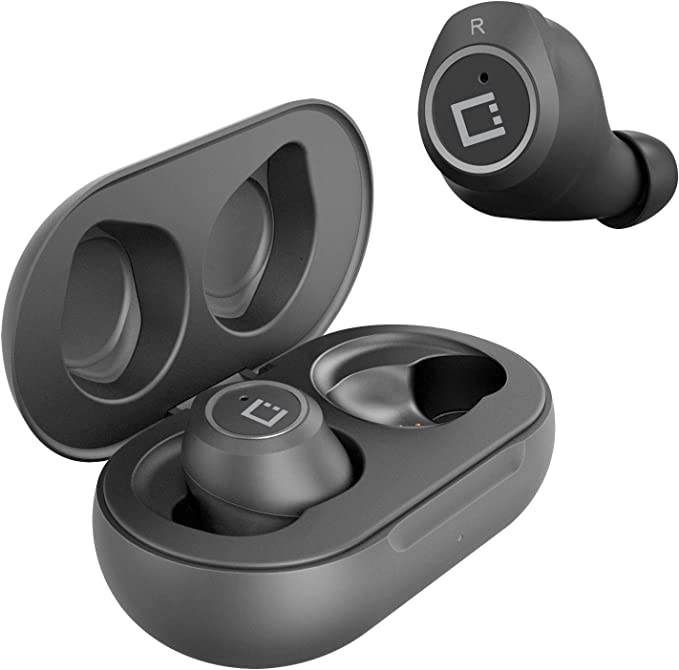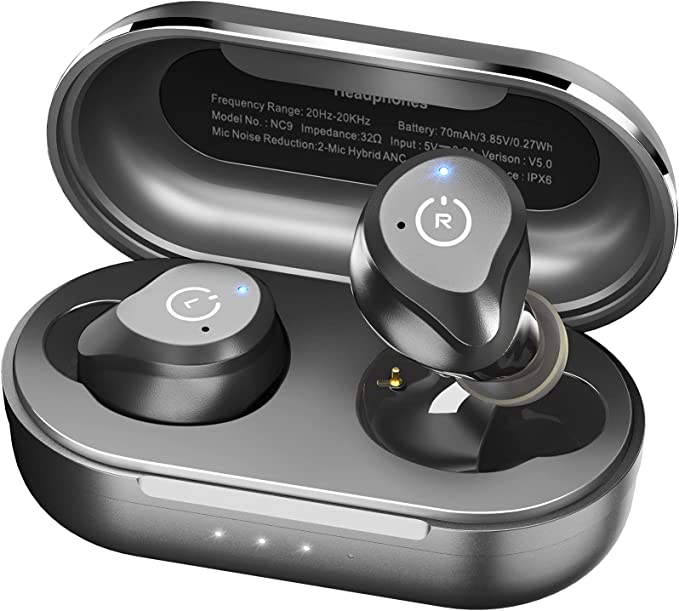Holiper M48-ENC Wireless Earbuds: Your Affordable Gateway to Clear Sound and Uninterrupted Calls
Update on June 6, 2025, 4:29 p.m.
Ever found yourself in that classic, frustrating scenario? You’re trying to relay crucial information over the phone, but the world around you seems determined to drown you out. The clatter of coffee cups in a bustling café, the roar of city traffic, the indistinct chatter of a crowded train – they all conspire against clarity. Or perhaps you’re simply craving that untethered freedom of listening to your favorite podcast while on the move, without battling a tangle of wires. In our hyper-connected, audio-saturated lives, the quest for clear, convenient, and reliable personal sound is more relevant than ever.
Now, what if I told you that a significant slice of the technology designed to tackle these everyday audio challenges could be yours for less than the price of a couple of fancy coffees? It sounds almost too good to be true, but let’s take a closer look at the Holiper M48-ENC Wireless Earbuds. At a mere $9.99, these unassuming earbuds are a fascinating case study in how far audio technology has come, and how accessible it can be. So, grab your curiosity, and let’s peek under the hood of these budget-friendly marvels to uncover the surprising science within.

Decoding Your Conversations: The Magic of Four Microphones and ENC
One of the primary battlegrounds for any communication device is call quality. Background noise isn’t just annoying; it can be a genuine barrier to effective communication. This is where the Holiper M48-ENC steps in with a rather impressive claim for its price point: “4 Mic, Wireless Headphones with ENC Noise Cancelling.” What exactly are these four microphones doing, and what is this “ENC”?
Think of it like this: each M48-ENC earbud houses a tiny, dedicated sound crew. The product description tells us, “Each earbud has 2 mics (4 microphones in total), one for picking up speech and the other for noise cancellation.” This isn’t just about having more microphones; it’s about how they work together. One microphone in each earbud is strategically placed to focus on capturing your voice with as much clarity as possible – it’s your voice’s personal reporter. Simultaneously, the second microphone in each earbud acts as a vigilant noise detective, constantly listening to and analyzing the ambient sounds in your immediate surroundings.
This is where Environmental Noise Cancellation (ENC) comes into play. The earbuds’ internal chipset takes the information from the noise-detecting microphones and performs a clever bit of audio wizardry. Using digital signal processing (DSP), it generates an “anti-noise” signal. This anti-noise is a sound wave that is precisely out of phase – like a mirror image – with the unwanted environmental sounds. When these two opposing sound waves meet, they effectively cancel each other out through a principle called destructive interference. Imagine ripples on a pond: if you create a new set of ripples that are the exact opposite of the existing ones, the water surface flattens. ENC does something similar with sound waves, specifically targeting the noise around you so it doesn’t get transmitted along with your voice to the person on the other end of the call.
The payoff, as Holiper claims, is providing “the clearest calls possible.” For you, this means the person you’re speaking to is much more likely to hear your voice clearly, even if you’re not in a library-quiet environment. It’s like having tiny, intelligent audio filters working to isolate your speech.
Now, it’s important to set expectations here. ENC, especially in budget-friendly earbuds, is primarily focused on improving the clarity of your outgoing voice during calls. It’s not the same as the all-encompassing Active Noise Cancellation (ANC) you might find in premium over-ear headphones, which aims to create a “cone of silence” for your listening experience by cancelling out a broad range of ambient noise around you (like the drone of an airplane engine). Some user reviews for the M48-ENC mention that the general “noise cancellation [is] nothing to write home about.” This likely refers to a lack of strong ANC for music listening. However, the ENC’s role is specifically tailored for phone calls, and in that context, it can make a noticeable difference.

The Unseen Handshake: Why Bluetooth 5.3 is Your Stable Connection’s Best Friend
The very essence of wireless earbuds is, well, being wireless. This untethered freedom is a modern convenience we’ve quickly come to expect, but it all hinges on a robust and reliable connection. The Holiper M48-ENC is “equipped with the latest Bluetooth 5.3 chip,” and this isn’t just a version number upgrade for marketing fluff; it brings tangible benefits to your listening experience.
Bluetooth, at its core, is a wireless technology standard for exchanging data over short distances using radio waves. Think of it as a personal area network that connects your earbuds to your phone, tablet, or laptop. Each new version aims to improve upon the last, and Bluetooth 5.3 offers several key advantages.
Firstly, Holiper states that “Bluetooth transmission is fast and the connection is stable.” Bluetooth 5.3 introduces enhancements that lead to more robust links, reducing those infuriating audio dropouts or stutters. It’s designed to be less susceptible to interference from other wireless devices that often crowd our airwaves.
Secondly, there’s the matter of latency – that tiny delay between when an audio signal is sent by your device and when you actually hear it in your earbuds. The product page claims “almost no latency.” While true “no latency” is the holy grail, Bluetooth 5.3 includes features that contribute to lower latency, which is particularly important when watching videos (to keep audio and video in sync) or playing games. This is partly due to improvements that form the foundation for LE Audio, a newer Bluetooth standard, although it’s not explicitly stated if the M48-ENC fully implements all LE Audio profiles.
Furthermore, Bluetooth 5.3 is engineered for better power efficiency. It features an improved channel selection algorithm (Channel Selection Algorithm #2) that helps devices choose better radio channels, leading to fewer retransmissions and thus saving power. This directly contributes to how long your earbuds can serenade you on a single charge.
Imagine Bluetooth versions as evolving generations of a highway system for your audio data. Older versions might have been like winding country roads, prone to congestion and slowdowns. Bluetooth 5.3 is more akin to a modern, multi-lane superhighway with intelligent traffic management, allowing your audio data to flow more smoothly, quickly, and efficiently. The practical result? After the initial pairing, the M48-ENC earbuds “will automatically power on and connect to your phone when you take them out of the charging case,” and you’ll generally experience a more seamless and uninterrupted audio journey.

The Heartbeat of Your Music: Understanding Those “High-Precision Dynamic Drivers”
Beyond clear calls and stable connections, the ultimate purpose of any earbud is to deliver sound to your ears. The component responsible for this crucial task is the driver. The Holiper M48-ENC earbuds utilize “high-precision dynamic drivers.” While “high-precision” is a somewhat subjective marketing term, “dynamic driver” refers to a very common and well-established type of audio transducer.
So, how does a dynamic driver actually create the sound you hear? It’s a fascinating little piece of electromechanical engineering. Inside each earbud, a dynamic driver typically consists of three main parts:
1. A diaphragm: A thin, lightweight membrane that vibrates to create sound waves.
2. A voice coil: A coil of very fine wire attached to the back of the diaphragm.
3. A magnet: A permanent magnet that creates a fixed magnetic field.
When your phone sends an electrical audio signal to the earbuds, this current flows through the voice coil. This generates a fluctuating magnetic field around the coil which interacts with the stationary magnetic field of the permanent magnet. This interaction creates a force (known as the Lorentz force) that pushes and pulls the voice coil – and therefore the attached diaphragm – rapidly back and forth. These precise vibrations of the diaphragm displace the air around it, creating pressure waves that travel through the ear canal to your eardrum. Your brain then interprets these pressure waves as the music, podcasts, or movie dialogue you’re listening to.
Think of it like a miniaturized, highly sophisticated drum. The diaphragm is like the drum skin, and the voice coil, under the influence of the audio signal and magnet, is like an incredibly fast and precise drumstick, striking the skin to produce a vast range of tones.
The manufacturer claims these drivers deliver “clear high-mids and powerful bass.” The ability of a dynamic driver to reproduce different frequencies (the highs, mids, and lows that make up the sound spectrum) depends on factors like the diaphragm’s material and stiffness, its size, the strength of the magnet, and the overall acoustic design of the earbud housing. While Holiper doesn’t specify these details for the M48-ENC (common for budget products), dynamic drivers are generally known for their ability to produce a full-bodied sound, often with good bass response, which makes them popular in a wide range of headphones and earbuds.
However, it’s also where compromises in budget audio often become apparent. One user review for the M48-ENC noted, “The bass is only OK.” This isn’t entirely surprising. Achieving truly deep, impactful, and well-defined bass alongside clear highs and articulate mids from a small, inexpensive dynamic driver is a significant engineering challenge. Often, in this price range, there might be a trade-off – perhaps a slight emphasis on mid-bass for perceived warmth, or a less extended low-frequency response. The “art of the possible” at $9.99 means sound quality will be good for the price, but it won’t rival audiophile-grade equipment costing many times more.

Built for Your Life: IPX5, Comfort, and All-Day Power
Great sound and clear calls are paramount, but for earbuds to become true daily companions, they also need to be practical, comfortable, and resilient. The Holiper M48-ENC incorporates several features aimed at just that.
First, there’s the IPX5 waterproof rating. “IP” stands for Ingress Protection, and it’s a standardized system for classifying the degree of protection provided by enclosures of electrical equipment. The “X” means the earbuds haven’t been specifically tested or rated for dust ingress. The “5” in IPX5, however, is quite specific: it means the earbuds are protected against low-pressure water jets from any direction. In practical, everyday terms, this means your M48-ENCs should comfortably survive a sweaty workout session at the gym, a light rain shower encountered on your commute, or even an accidental splash if you’re wearing them while doing dishes. They are not designed for swimming or being submerged in water, but the IPX5 rating provides a good degree of confidence against common moisture-related mishaps.
Comfort is another crucial factor, especially for in-ear devices designed for potentially long periods of wear. The Holiper M48-ENC comes with “Three pairs of L M S ear caps.” These silicone eartips are vital. Finding the “Goldilocks fit” – not too tight, not too loose, but just right – does more than just prevent the earbuds from falling out. A good seal within your ear canal is critical for two other reasons:
1. Passive Noise Isolation: A snug fit physically blocks out some ambient sound, improving your listening experience even without electronic noise cancellation.
2. Bass Response: A proper seal is essential for experiencing the full bass potential of the drivers. If the seal is poor, bass frequencies tend to “leak” out, resulting in a thin, tinny sound.
And finally, what good is a wireless device if its battery is constantly dying? The M48-ENC offers “up to 6 hours of playtime on a single charge,” and the “charging case provides 24 hours of backup playtime.” This impressive stamina is a result of a synergistic combination of technologies. The earbuds themselves utilize Lithium Polymer batteries, which are favored in small electronics for their high energy density (packing a lot of power into a small, lightweight package) and flexible form factors. Coupled with the power-saving optimizations of Bluetooth 5.3, this allows for those respectable single-charge listening sessions. The charging case itself acts as a portable power bank, capable of replenishing the earbuds multiple times before it needs recharging, effectively giving you a total of around 30 hours of listening on the go. This means for many users, a single charge of the case could last for several days of typical use.

The $9.99 Marvel: How is This Even Possible?
Throughout this exploration, we keep coming back to that almost unbelievable price tag: $9.99. It’s natural to wonder, how can a pair of wireless earbuds offering features like 4-microphone ENC, Bluetooth 5.3, and decent playtime be sold for so little? This isn’t magic; it’s a testament to several powerful forces at play in the modern consumer electronics landscape.
Firstly, many of the core technologies involved – dynamic drivers, basic Bluetooth chipsets, even the principles of ENC – are now mature technologies. They’ve been around for years, refined through multiple iterations, and the initial research and development costs have long been amortized. This maturity brings down the cost of individual components.
Secondly, there’s the incredible efficiency of global supply chains and large-scale manufacturing. The product information states “Country of Origin: China,” which is a hub for electronics manufacturing. The ability to produce components and assemble products at massive volumes drives down the per-unit cost significantly. Economies of scale are a powerful factor here.
Thirdly, it’s about focused design and feature prioritization. At this price point, manufacturers aren’t trying to compete with flagship products on every single specification. Instead, they focus on delivering a core set of features that provide the most tangible value to the average user within a strict budget. You might not get the very latest audio codecs, the most exotic driver materials, or advanced ANC, but you get functional ENC for calls, a modern Bluetooth version for stable connectivity, and perfectly adequate sound for everyday listening.
So, when you see a price like $9.99, it’s not necessarily an indicator of something being “cheap” in a pejorative sense. Rather, it can be seen as a remarkable example of accessible innovation – where once-premium technologies have become so refined and efficiently produced that they can be offered to a vast audience at an incredibly affordable price.

Conclusion: Hearing the Value, Appreciating the Science
The Holiper M48-ENC Wireless Earbuds, priced at what many would spend on a quick lunch, are more than just a pair of budget audio accessories. They are a tiny, tangible testament to the relentless march of technological progress and the beautiful way innovation can become democratized. From the clever interplay of microphones working to lift your voice above the noise, to the invisible yet crucial stability of Bluetooth 5.3, and the fundamental physics of dynamic drivers transforming electrical signals into the music that moves you – there’s a surprising amount of science packed into their unassuming shells.
You don’t need to spend a fortune to enjoy a solid, scientifically sound audio experience for your calls, your podcasts, and your daily soundtrack. While they may not satisfy the exacting demands of a seasoned audiophile, the Holiper M48-ENC earbuds demonstrate that reliable wireless audio, clear communication, and everyday convenience are now within almost everyone’s reach. So, the next time you pop in your earbuds, regardless of their price tag, take a moment to appreciate the intricate symphony of science and engineering working silently, and often surprisingly affordably, to enrich your auditory world.
